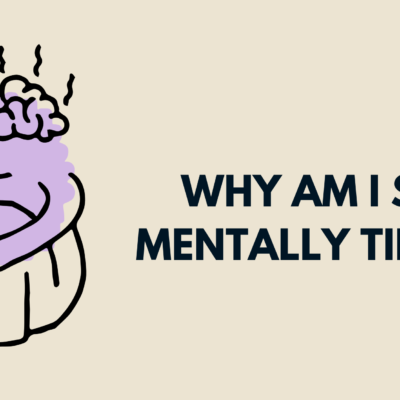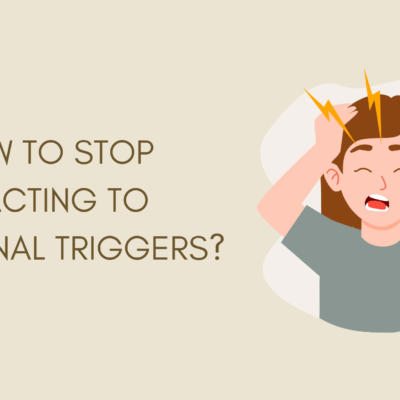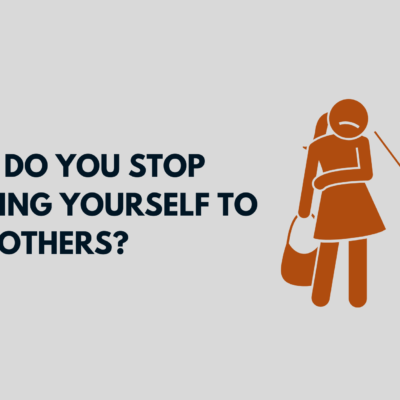How to Change Your Mind and Your Life: We often hear the phrase, “Change your thoughts, and you change your world.” But what does it really mean to change your mind—and how does that translate into changing your life? For many, the idea sounds abstract or even impossible. After all, our thoughts and beliefs feel deeply rooted, shaped by years of experience, culture, upbringing, and trauma.
Yet science, psychology, and countless real-life stories tell us the same thing: transformation is possible—from the inside out. You can change your mind. And when you do, your entire life begins to shift.
In this article, we’ll explore the why, the how, and the what next of changing your mind—and how that single act of courage can open the door to a more meaningful, joyful life.
Also Read:
Part 1: Why Changing Your Mind Matters
1.1 Your Mind Shapes Your Reality
At its core, your mind is the lens through which you see the world. If your mind is filled with fear, negativity, or self-doubt, then even the most promising opportunities can look like threats. On the other hand, if your mind is open, curious, and resilient, you’ll see challenges as growth opportunities and problems as solvable puzzles.
Your thoughts influence:
- Your emotions
- Your choices
- Your relationships
- Your health
- Your self-worth
1.2 Fixed Mindset vs. Growth Mindset
Carol Dweck, a Stanford psychologist, introduced the concept of the growth mindset—the belief that abilities and intelligence can be developed through dedication and hard work. People with a growth mindset embrace challenges and persist despite setbacks. Those with a fixed mindset believe their traits are unchangeable, leading to fear of failure and avoidance of difficulty.
The first step to changing your life is understanding: you are not stuck. Your brain is flexible. Your habits are trainable. Your beliefs are rewritable.
Part 2: The Inner Work of Changing Your Mind
Changing your mind isn’t about “positive thinking” alone. It’s about deep, intentional mental shifts that align with your goals, values, and desired life. Here are key strategies to do just that.
2.1 Awareness: Catch Your Inner Dialogue
You can’t change what you don’t notice. Begin by listening to your inner dialogue. What do you say to yourself when you fail? When you look in the mirror? When something goes wrong?
Common toxic thoughts include:
- “I’m not good enough.”
- “I always mess things up.”
- “It’s too late for me.”
- “That’s just how I am.”
Practice self-observation without judgment. Journaling is a powerful tool here—write down your thoughts, and start identifying patterns.
2.2 Reframe Your Thoughts
Once you recognize a limiting belief, try reframing it. For example:
- “I always fail” → “I’m learning from my experiences.”
- “I’m not confident” → “I’m building confidence every day.”
- “I don’t know how” → “I can figure it out or learn.”
The goal isn’t to lie to yourself—it’s to adopt empowering interpretations of your reality.
2.3 Choose Your Beliefs
Beliefs are just thoughts you’ve repeated enough times. You have the power to choose new ones.
Ask yourself:
- What do I believe about myself?
- Where did this belief come from?
- Is it true—or just familiar?
- What belief would serve me better?
For example, if you believe you’re not creative, challenge that belief by trying something artistic. You’ll often find that your limits were never as real as they seemed.
2.4 Practice Mindfulness and Meditation
Mindfulness helps create space between stimulus and response. It allows you to observe your thoughts without getting caught in them. Meditation rewires your brain, strengthens focus, and reduces stress—making it easier to notice, challenge, and change your thought patterns.
Just 10 minutes a day can create profound shifts over time.
Part 3: Taking Action—Because Change Needs Movement
Your mindset fuels your actions—but actions also reinforce your mindset. It’s a feedback loop. When you change your thinking, it empowers you to act differently. And when you act differently, your brain starts to believe new things are possible.
3.1 Set Small, Aligned Goals
Don’t try to change your life in one grand leap. Set tiny, achievable goals that align with the new identity you’re creating.
- Want to be healthier? Start with a 10-minute walk daily.
- Want to be more confident? Speak up once a day.
- Want to write a book? Write 200 words each morning.
Small wins build momentum—and each step builds belief.
3.2 Surround Yourself with Growth-Minded People
Your environment has a powerful influence. Spend time with people who uplift, challenge, and support your growth. Seek out mentors, books, podcasts, or communities that reflect the life you want to build.
Avoid those who reinforce your old limitations or drain your energy.
3.3 Let Go of the Old Story
One of the hardest parts of changing your mind is letting go of the story you’ve told yourself—about who you are, what you’re capable of, and what’s possible for you.
Maybe you’ve been the “shy one,” the “failure,” or the “people-pleaser.” These roles may have served a purpose in the past, but they don’t have to define your future.
Ask yourself: What story am I ready to retire?
And then: What new story am I ready to live?
Part 4: Navigating Resistance and Fear
Let’s be real: change isn’t easy. It’s messy, emotional, and often uncomfortable. When you start changing your mind—and by extension, your life—expect resistance.
4.1 The Comfort Zone Trap
The brain loves familiarity. Even if your current life is painful, it’s predictable—and that feels safe. Stepping outside your comfort zone will trigger alarm bells. Expect it, and don’t take it as a sign to stop.
Instead, tell yourself: “This discomfort means I’m growing.”
4.2 Embrace Failure as Feedback
Fear of failure keeps many people stuck. But failure isn’t the opposite of success—it’s part of it. Every mistake gives you data. Every fall strengthens your resilience.
Shift from “I failed” to “I’m learning.”
4.3 Be Patient with Yourself
Change is not linear. You will have off days, setbacks, and moments of doubt. Be gentle. Be compassionate. You are unlearning years—sometimes decades—of mental conditioning.
Progress is progress, even if it’s slow.
Part 5: Living the New Life You’ve Created
As you change your mind, your life will start to reflect those internal shifts. You’ll notice new opportunities, improved relationships, and a deeper sense of purpose.
5.1 Celebrate the Wins
Acknowledge every step forward—big or small. Celebrating your progress reinforces your new mindset and keeps you motivated.
5.2 Stay Open to Evolution
Changing your mind once isn’t the end—it’s the beginning. Life will always present new challenges, ideas, and paths. Stay open. Stay curious. You are allowed to grow and change, again and again.
5.3 Share What You’ve Learned
When you change your life, you inspire others to believe they can, too. Your courage becomes a permission slip for someone else.
Final Thoughts
Changing your mind is one of the most powerful things you can do. It’s not about pretending everything is perfect—it’s about seeing the truth with clarity, then choosing something better. It’s about reclaiming your power, your purpose, and your potential.
You are not your past. You are not your fear. You are not your mistakes.
You are a creator. A learner. A work in progress. And your best life is still ahead.
Action Plan (Summary)
- Practice awareness – Catch your recurring thoughts.
- Reframe beliefs – Replace disempowering thoughts with better ones.
- Use mindfulness – Cultivate presence and mental clarity.
- Take small actions – Build confidence with tiny steps.
- Surround yourself wisely – Find people who inspire growth.
- Expect resistance – Embrace discomfort and failure as part of the process.
- Stay consistent – Repetition turns new thinking into a lifestyle.
If you’re ready to change your mind, you’re already halfway to changing your life. The rest? One courageous thought—and one step—at a time.






